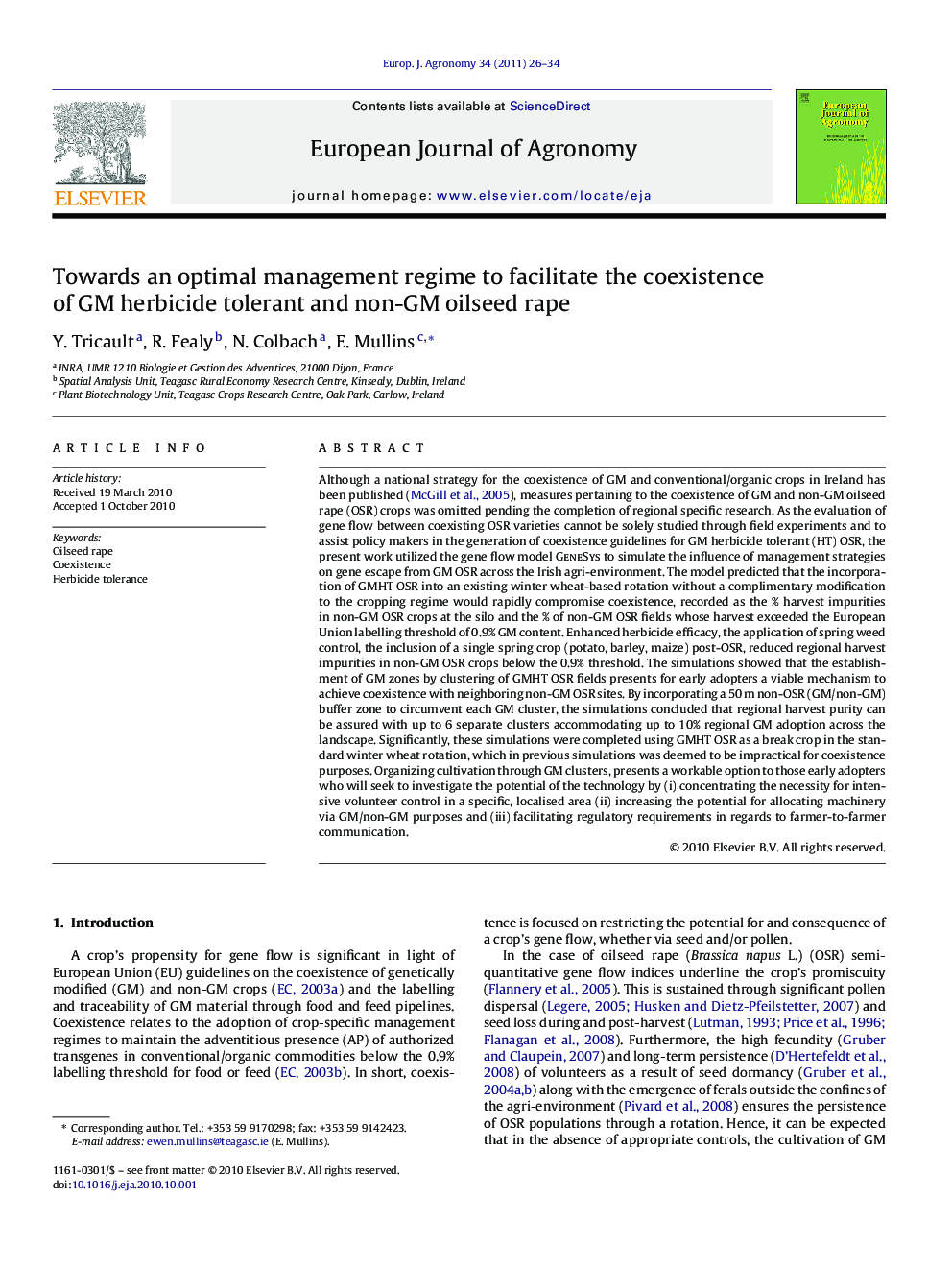| Article ID | Journal | Published Year | Pages | File Type |
|---|---|---|---|---|
| 4509325 | European Journal of Agronomy | 2011 | 9 Pages |
Although a national strategy for the coexistence of GM and conventional/organic crops in Ireland has been published (McGill et al., 2005), measures pertaining to the coexistence of GM and non-GM oilseed rape (OSR) crops was omitted pending the completion of regional specific research. As the evaluation of gene flow between coexisting OSR varieties cannot be solely studied through field experiments and to assist policy makers in the generation of coexistence guidelines for GM herbicide tolerant (HT) OSR, the present work utilized the gene flow model GeneSys to simulate the influence of management strategies on gene escape from GM OSR across the Irish agri-environment. The model predicted that the incorporation of GMHT OSR into an existing winter wheat-based rotation without a complimentary modification to the cropping regime would rapidly compromise coexistence, recorded as the % harvest impurities in non-GM OSR crops at the silo and the % of non-GM OSR fields whose harvest exceeded the European Union labelling threshold of 0.9% GM content. Enhanced herbicide efficacy, the application of spring weed control, the inclusion of a single spring crop (potato, barley, maize) post-OSR, reduced regional harvest impurities in non-GM OSR crops below the 0.9% threshold. The simulations showed that the establishment of GM zones by clustering of GMHT OSR fields presents for early adopters a viable mechanism to achieve coexistence with neighboring non-GM OSR sites. By incorporating a 50 m non-OSR (GM/non-GM) buffer zone to circumvent each GM cluster, the simulations concluded that regional harvest purity can be assured with up to 6 separate clusters accommodating up to 10% regional GM adoption across the landscape. Significantly, these simulations were completed using GMHT OSR as a break crop in the standard winter wheat rotation, which in previous simulations was deemed to be impractical for coexistence purposes. Organizing cultivation through GM clusters, presents a workable option to those early adopters who will seek to investigate the potential of the technology by (i) concentrating the necessity for intensive volunteer control in a specific, localised area (ii) increasing the potential for allocating machinery via GM/non-GM purposes and (iii) facilitating regulatory requirements in regards to farmer-to-farmer communication.
Research highlights▶ Clustering GM oilseed rape fields into GM zones will facilitate coexistence. ▶ 50 m separation of GM and non-GM zones can facilitate regional GM levels of 10%. ▶ Cultivating through GM zones presents a workable option to early adopters.
